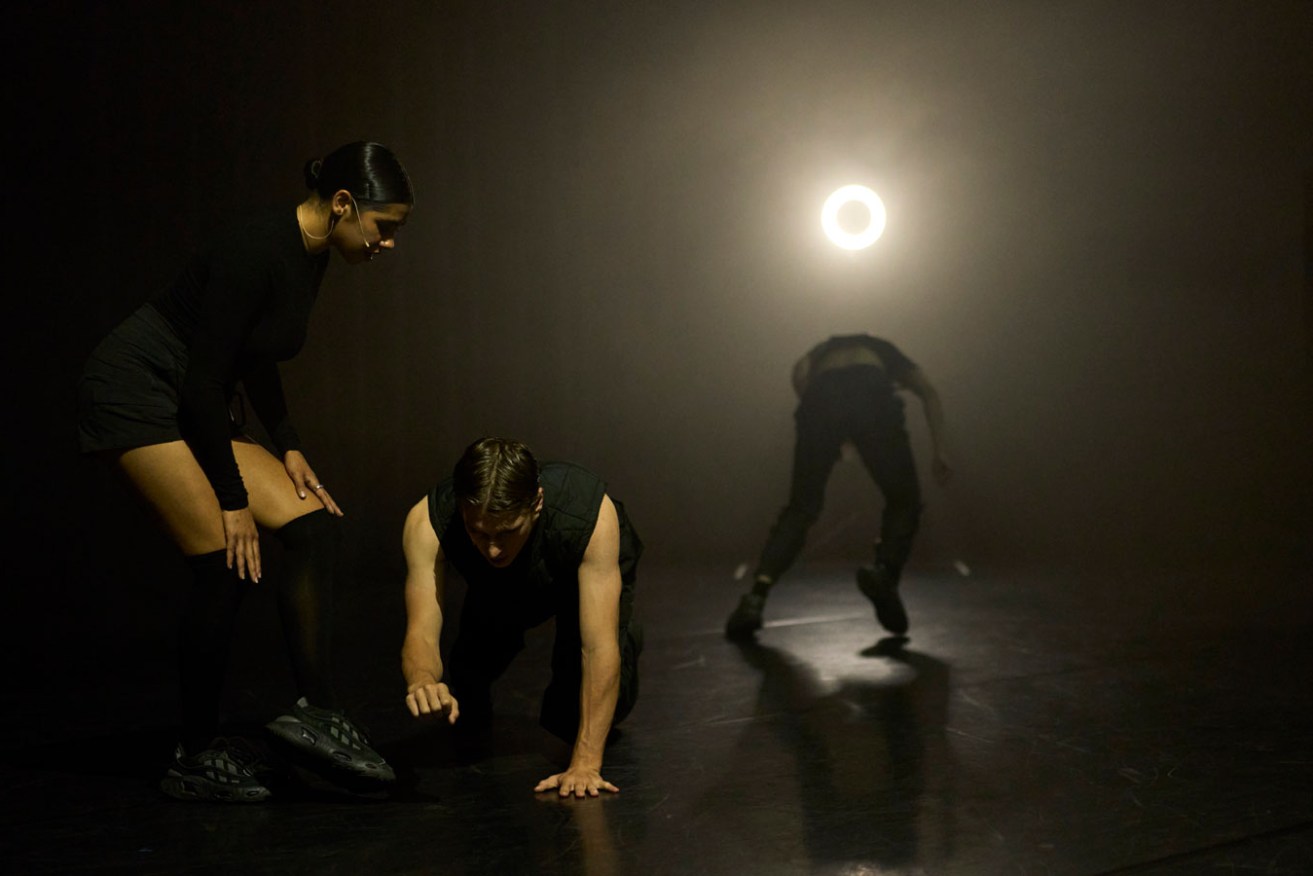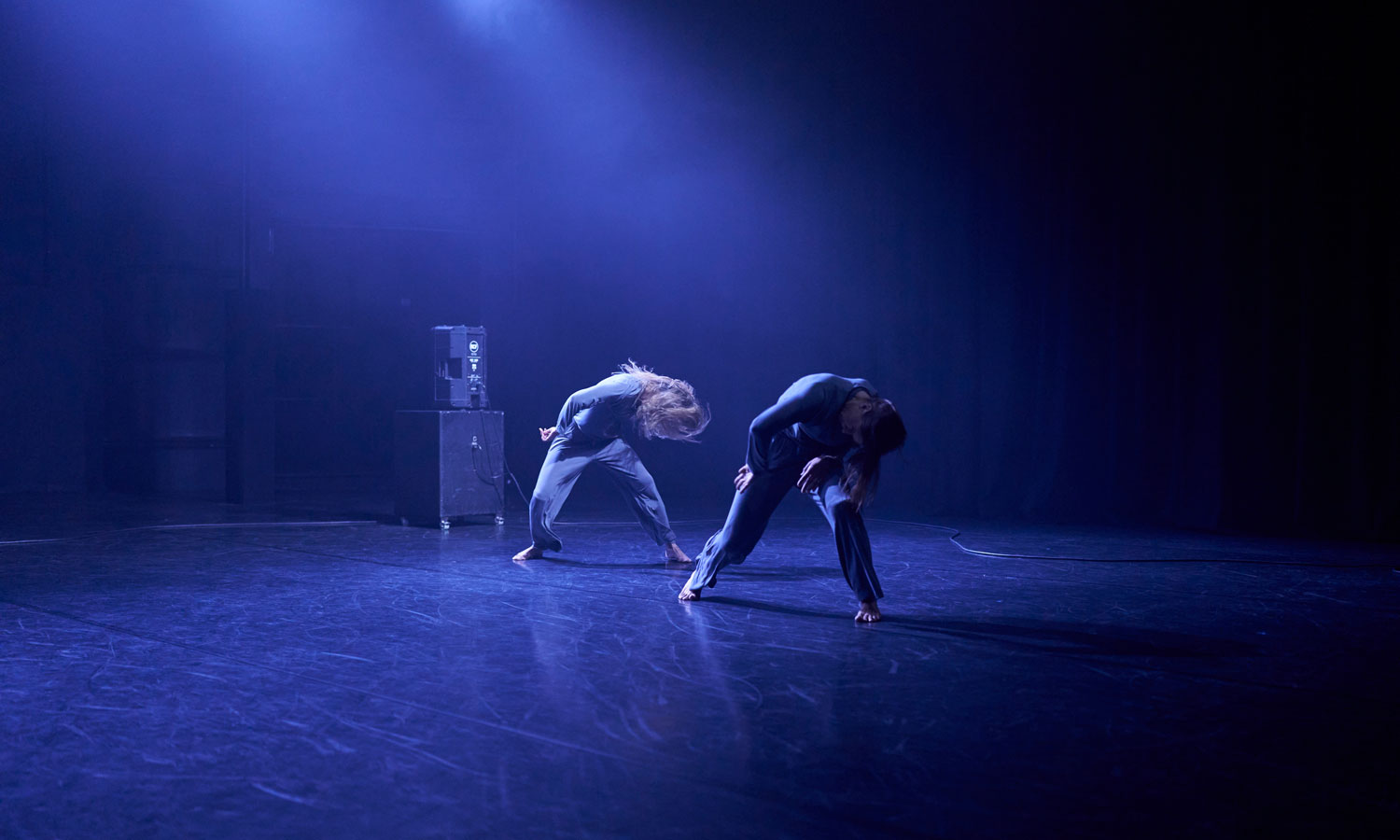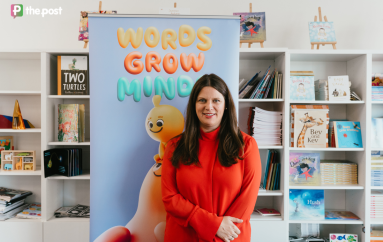Dance review: ADT’s Cultivate: One
Australian Dance Theatre is celebrating the work of emerging artists with a bold triptych of new pieces exploring themes including the brain’s response to trauma, and language as a tool of colonial oppression.


'Cultivate: One' showcases the talents of a new generation of Australian Dance Theatre company artists. Photo: Sam Roberts / supplied
Cultivate: One (hopefully the first of an ongoing series) is ADT’s final project for 2023 and premieres work choreographed by company artists Zachary Lopez, Sebastian Geilings and Brianna Kell. It’s a testament to the company’s culture of collaborative creativity that these artists also help bring each other’s vision to the stage.
Lopez’s Down Trodden Punk opens the show, setting the evening’s ambitious agenda with an exploration of language as an instrument of colonial oppression. Under a harsh spotlight, two black-clad figures move to a soundscape littered with passages from the infamous dictation test used under the White Australia policy. Their steps recall the simulated naturalness of video-game characters: not robotic, but never quite approaching the freedom of true fluency.
There’s a percussive quality here, too, as the dancers slap hands and feet against the floor, suggesting a desire to break through their unseen constraints. Later in the piece, a third figure (fellow choreographer Kell) fights her way along a beam of light in a vulnerable show of resistance.
Next on the program is How Much of You is Repetition? – a piece by Geilings that contains some of the most memorable imagery of the three works. Drawing on his own healing journey, he looks at the phenomenon of “dysregulation”, which occurs when the brain is unable to process trauma and becomes “stuck in survival mode”.
Sudden, loud hammering at a side door makes for a jump-scare of an opening, before the lights go up on two vacant-eyed figures (Kell, once again, and Zoe Wozniak). Dressed in anonymous grey, both sit doll-like on large audio speakers in a tension-building silence that stretches longer than expected. Finally, the hush is broken, and they begin to test their limbs. Insistent, indecipherable electronic noise starts up as they alternate between wearily dragging the speakers around the stage and dancing as if being taken over by a stronger force.
It’s a striking visual metaphor for the inescapable feedback loop of a brain stuck in trauma. Unpredictable flashes of eerie red lighting heighten the sense of panic. Geilings is adept at knowing when to employ all the visual and audio design tools at his disposal to enhance his themes, and when to wield stillness, silence and empty space with equal impact.

Sebastian Geilings’ How Much of You is Repetition? Photo: Sam Roberts
Kell’s NOW / AGAIN closes the show. With its set design featuring mirrored prisms and a hazy blue backdrop, it has an almost celestial feel compared to the darkness of the preceding pieces. Its theme, too, is less defined, centring on the idea of human connection through time. Four dancers (Lopez among them) take to the stage in lightweight casualwear, their movements lyrical, intimate and relational as they shift between dancing alone, in pairs, and as a larger group.
The mirrors, most obviously symbols of self-reflection, can also be seen as portals. In an unexpected “through the looking-glass” moment towards the end, the dancers crawl over the prisms, triggering an abrupt change in sound and lighting that compels them into more frenzied, upbeat movement.
Fostering the multiple talents of these company artists is a priority for ADT artistic director Daniel Riley, who stepped briefly onto the stage between the first two pieces to speak both about this project and the company’s mounting excitement as it looks forward to marking its 60th anniversary in 2025. It’s exciting to see a company equally invested in celebrating a rich history and cultivating the new generation of artists who are continuing its legacy of bold experimentation.
Australian Dance Theatre is presenting Cultivate: One at The Odeon in Norwood until November 25.
This article is republished from InReview under a Creative Commons licence. Read the original article.
InReview is an open access, non-profit arts and culture journalism project. Readers can support our work with a donation. Subscribe to InReview’s free weekly newsletter here.




